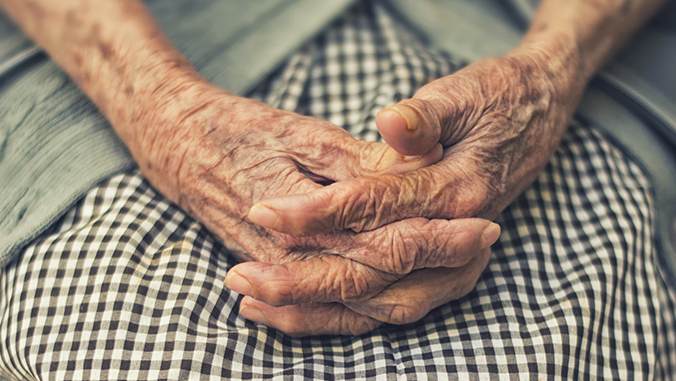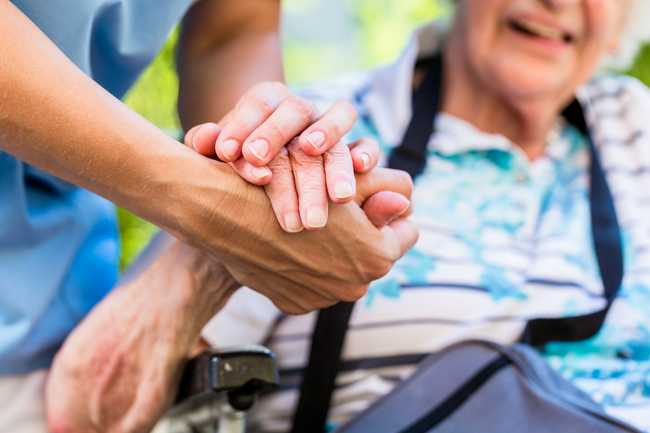Incontinence is an all-too-common challenge that many families face when caring for their elderly parents. It’s a topic that can be uncomfortable to address, yet addressing it is crucial for maintaining your parent’s quality of life and ensuring their well-being as they age. In this article, we’ll provide you with practical guidance and compassionate insights on how to navigate the sensitive issue of incontinence in elderly parents. From understanding its causes and different types to offering effective strategies for managing it with empathy and dignity, we’re here to support you in this journey. Let’s embark on this path together, prioritizing care and understanding every step of the way.
Contents
Incontinence: How To Deal With It In Elderly Parents
The impact of urinary incontinence on elderly parents cannot be overstated. It goes beyond the physical inconvenience and embarrassment. It affects their psychological and emotional well-being, leading to a loss of confidence and social withdrawal. Additionally, managing incontinence often involves lifestyle adjustments, such as fluid and diet management or regular pelvic floor muscle exercises (Kegel exercises).

Addressing urinary incontinence in older adults necessitates a holistic approach. This includes seeking medical evaluation and treatment, making necessary home modifications, and providing emotional support. To determine the most appropriate interventions, involve a healthcare provider, such as a primary care doctor or a urinary specialist. Depending on the individual’s condition, treatment options may range from medications to surgical procedures, like the artificial urinary sphincter.
Recognizing and addressing urinary incontinence in elderly parents is crucial for enhancing their overall quality of life. By understanding the various forms, causes, and management options for incontinence, families and caregivers can provide the necessary support and care to ensure their loved ones live comfortably and with dignity.
Types of Incontinence
Urinary incontinence is prevalent among older adults, often causing discomfort and embarrassment. This section delves into the various types of incontinence that older adults may experience, shedding light on the underlying causes and potential management strategies.

Stress Incontinence
Stress incontinence occurs when there is an involuntary leakage of urine during activities that exert pressure on the bladder, such as coughing, sneezing, laughing, or lifting. This incontinence is primarily attributed to weakened pelvic floor muscles supporting the bladder and maintaining urinary control. Aging and childbirth are common factors contributing to the development of stress incontinence.
Individuals can engage in pelvic floor muscle exercises to address stress incontinence, commonly known as Kegel exercises. These exercises aim to strengthen the pelvic floor muscles and improve bladder control. Additionally, medical interventions may be recommended for more severe cases, including sling procedures or an artificial urinary sphincter.
Urge Incontinence
Urge incontinence, also known as overactive bladder, is characterized by a sudden and intense urge to urinate, often leading to involuntary urine leakage before reaching the restroom. This condition is typically linked to an overactive bladder muscle, which contracts prematurely, causing the urgency to urinate.
Treatment for urge incontinence may involve bladder training techniques to regain control over the bladder’s contractions. Medications a healthcare professional prescribes can also help relax the bladder muscle and alleviate symptoms. Lifestyle modifications, such as fluid and diet management, can complement these treatments and improve overall bladder function.
Overflow Incontinence
Overflow incontinence is characterized by constant or frequent dribbling of urine due to an inability to empty the bladder fully. This condition often arises from an obstruction in the bladder outlet, such as an enlarged prostate in men or bladder muscle dysfunction.
Managing overflow incontinence may require addressing the underlying cause, such as prostate gland treatment or interventions to relieve bladder outlet obstruction. Catheterization, either intermittent or indwelling, may sometimes be necessary to assist with bladder emptying.
Functional Incontinence
Functional incontinence occurs when an individual cannot reach the restroom in time due to physical or cognitive limitations despite having normal urinary control. This type of incontinence is commonly associated with conditions like severe dementia, Alzheimer’s disease, or other neurological disorders that impair decision-making and mobility.
Managing functional incontinence often involves addressing the root cause, such as cognitive impairment. Caregivers may assist in ensuring regular toileting schedules and providing appropriate guidance. In some instances, medical devices like incontinence pads or urethral inserts may be used to manage symptoms and maintain dignity.
Causes of Incontinence in the Elderly
Understanding the causes of incontinence in older people is crucial for effective management and prevention. Several factors can contribute to developing urinary incontinence in older adults, including aging-related changes, medical conditions, medications, and lifestyle choices.

Aging-Related Factors
As individuals age, various physiological changes can affect urinary function. The bladder may lose elasticity, reducing its capacity to hold urine. The muscles that control urination, including the pelvic floor muscles, may weaken over time. Additionally, older adults may experience decreased bladder sensation, making it challenging to recognize when it’s time to empty the bladder.
Medical Conditions
Certain medical conditions can predispose older adults to urinary incontinence. These include urinary tract infections (UTIs), pelvic organ prolapse, and lower urinary tract symptoms. Treating the underlying medical condition is often the first step in addressing incontinence related to these issues. For example, antibiotics can effectively treat UTIs and alleviate associated incontinence symptoms.
Medications
Some medications can impact bladder control, leading to urinary incontinence as a side effect. Medications that may contribute to incontinence include diuretics, antihypertensives, and sedatives. If an elderly individual is experiencing incontinence due to medication, a healthcare provider may adjust the prescription or explore alternative treatment options.
Lifestyle Factors
Lifestyle choices can play a significant role in developing and managing urinary incontinence in older people. Fluid intake, dietary habits, and weight management can influence bladder function. Educating individuals about appropriate fluid intake, avoiding bladder irritants, and maintaining a healthy weight can help manage incontinence.
Practical Tips for Managing Incontinence
Urinary incontinence is a common condition that affects millions of people worldwide. It can be a source of embarrassment and discomfort, but there are practical steps you can take to manage it effectively. Let’s delve into the valuable tips on coping with urinary incontinence, whether it’s due to stress incontinence, urge incontinence, or other underlying causes.

Establishing a Routine
One of the fundamental strategies for managing urinary incontinence is establishing a daily routine. This routine can help you anticipate your body’s needs and minimize accidents. Here are some key components of a well-structured daily schedule:
- Scheduled Bathroom Breaks: Set specific times for daily bathroom breaks. This can help prevent urge incontinence by emptying your bladder before it becomes overly full.
- Fluid Management: Monitor your fluid intake and adjust it as needed. While staying hydrated is crucial, limiting your intake of bladder-irritating beverages like caffeine and alcohol can be beneficial.
- Meal Planning: Be mindful of your diet, as certain foods and drinks can exacerbate incontinence symptoms. Spicy foods, acidic foods, and carbonated beverages are known triggers for some individuals.
- Medication Management: If you’re taking medications that affect bladder function, discuss their timing with your healthcare provider. They may recommend adjusting your medication schedule to minimize incontinence episodes.
Appropriate Clothing and Supplies
Choosing the right clothing and incontinence supplies can make a significant difference in your comfort and confidence:
- Incontinence Products: Invest in high-quality incontinence pads, liners, or adult diapers. These products can provide essential protection against accidents and offer peace of mind while away from home.
- Clothing Choices: Opt for loose-fitting, easily removable clothing, especially when you know you’ll be out and about. This can make it easier to access the restroom quickly.
- Waterproof Outerwear: Wear waterproof or moisture-resistant outer layers to protect your clothing from leaks.
Bed and Furniture Protection
Protecting your bed and furniture is essential to maintaining a clean and comfortable living space:
- Waterproof Mattress Covers: Invest in waterproof mattress and pillow covers to prevent damage from nighttime accidents.
- Furniture Pads: Place absorbent pads or covers on chairs and sofas you frequently use to safeguard them from spills.
- Disposable Underpads: Use disposable underpads on chairs and beds for added protection and easy cleanup.
Maintaining Hygiene
Maintaining good hygiene is crucial for preventing skin irritation and infection:
- Regular Cleansing: Cleanse your genital area with gentle, fragrance-free wipes or mild soap and water. Avoid harsh chemicals that can irritate sensitive skin.
- Proper Handwashing: Practice thorough handwashing after each bathroom visit to reduce the risk of urinary tract infections (UTIs).
- Skin Care: Apply a protective barrier cream to prevent skin irritation and rashes caused by contact with moisture.
Monitoring Fluid Intake
Keeping track of your fluid intake can help you manage incontinence effectively:
- Bladder Diary: Maintain a bladder diary to record when you urinate, how much you drink, and any incontinence episodes. This can help identify patterns and triggers.
- Evening Fluid Restriction: Limit your fluid intake in the evening to reduce nighttime incontinence. However, be sure to strike a balance to avoid dehydration.
Encouraging Pelvic Floor Exercises
Strengthening your pelvic floor muscles can improve bladder control. Consider the following exercises:
- Kegel Exercises: Regularly practice Kegel exercises to strengthen the muscles that control urination. These exercises can be particularly effective for stress incontinence.
- Pelvic Floor Physical Therapy: Consult with a pelvic floor physical therapist for personalized exercises and guidance tailored to your specific needs.
Using Assistive Devices
In some cases, assistive devices may be beneficial in managing urinary incontinence:
- Bladder Training: Learn techniques for delaying urination and gradually increasing the time between bathroom visits. A continence nurse or specialist can provide guidance.
- Urinary Catheters: Indwelling catheters or intermittent catheterization may be recommended for individuals with severe incontinence or certain medical conditions.
- Incontinence Products: Explore options like urethral inserts and artificial urinary sphincters for more advanced management.
Video Credit: @upmc
Enhancing Quality of Life Through Empathetic Incontinence Management
In navigating the challenges of managing urinary incontinence among elderly parents, a multifaceted approach centered on empathy, patience, and understanding emerges as a pivotal strategy. As we reflect on the journey of addressing this delicate issue, it becomes evident that the well-being of our loved ones hinges on our ability to foster an environment of care and support.
A fundamental takeaway is the significance of open, non-judgmental communication when addressing incontinence with elderly parents. Their emotional well-being is intrinsically linked to our ability to approach the topic empathetically, acknowledging their challenges while offering unwavering support. By cultivating a compassionate dialogue, we ease their discomfort and foster a stronger bond built on trust and understanding.

Let us remember that the ultimate objective is to enhance the quality of life for our elderly parents. The goal is not solely to manage urinary incontinence as a medical issue but to ensure their comfort, dignity, and sense of agency. By recognizing their individual needs and preferences, we empower them to actively participate in crafting a personalized care plan that respects their autonomy.
Frequently Asked Questions
What is urinary incontinence?
Urinary incontinence is the involuntary leakage of urine, affecting many older adults. It can result from various factors, including weakened bladder muscles, urinary tract infections, and neurological disorders.
What are the different types of urinary incontinence?
There are several types of urinary incontinence, such as stress incontinence, which occurs during activities that stress the bladder and urge incontinence, characterized by a sudden urge to urinate. Overflow incontinence happens when the bladder doesn’t empty, while mixed incontinence combines stress and urge incontinence.
What causes urinary incontinence in older people?
Urinary incontinence depends on various factors like aging, weakened pelvic floor muscles, pelvic organ prolapse, enlarged prostate (in men), and cognitive impairment in conditions like Alzheimer’s disease.
How can bladder control be improved?
Bladder control can be enhanced through exercises that target the pelvic floor muscles. Kegel exercises, for instance, involve contracting and relaxing these muscles. Additionally, bladder training techniques can help gradually increase the time between bathroom visits.
What medical treatments are available?
Medical interventions include medication for overactive bladder, artificial urinary sphincter implantation for severe cases, and sling procedures to support the bladder neck. Consult a primary care doctor or urinary specialist to discuss appropriate treatments.
Are there lifestyle changes that can help manage incontinence?
Yes, lifestyle changes can significantly help manage incontinence. Maintaining a healthy fluid intake, managing diet, losing weight if necessary, and avoiding triggers that worsen incontinence are beneficial.
How can caregivers provide effective support?
Caregivers can assist by encouraging pelvic floor exercises, helping with hygiene and incontinence care, monitoring fluid intake, and using incontinence pads or other medical devices as needed. Consulting a continence nurse or specialist can provide additional guidance tailored to individual needs.
? Discover the Ultimate Senior Parenting Community! ?
Are you navigating the exciting journey of senior parenting? Join us at SR-Parents.com, your go-to destination for expert advice, heartwarming stories, and a supportive community that understands your unique joys and challenges. Follow us on our social media channels for daily doses of inspiration, tips, and connection:
? Website: sr-parents.com
? Facebook: facebook.com/sr.parents
? Instagram: instagram.com/seniorparents
? Pinterest: pinterest.com/seniorparents
? Twitter: twitter.com/senior_parents
At SR-Parents, we celebrate the magic of senior parenting – from milestones and memories to the bonds that last a lifetime. Our community is a safe space to share experiences, seek guidance, and make lifelong friends who understand the beauty of this journey.
Don’t miss out! Click that follow button and be part of something extraordinary at SR-Parents.com. Your journey to senior parenting bliss starts here. ? #SeniorParents #ParentingJourney #JoinUsToday





